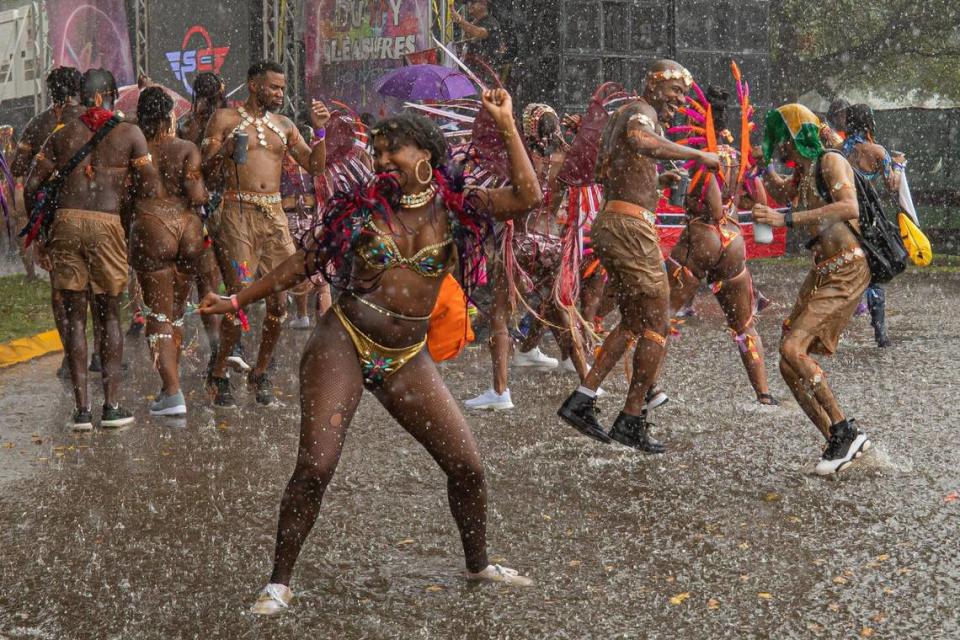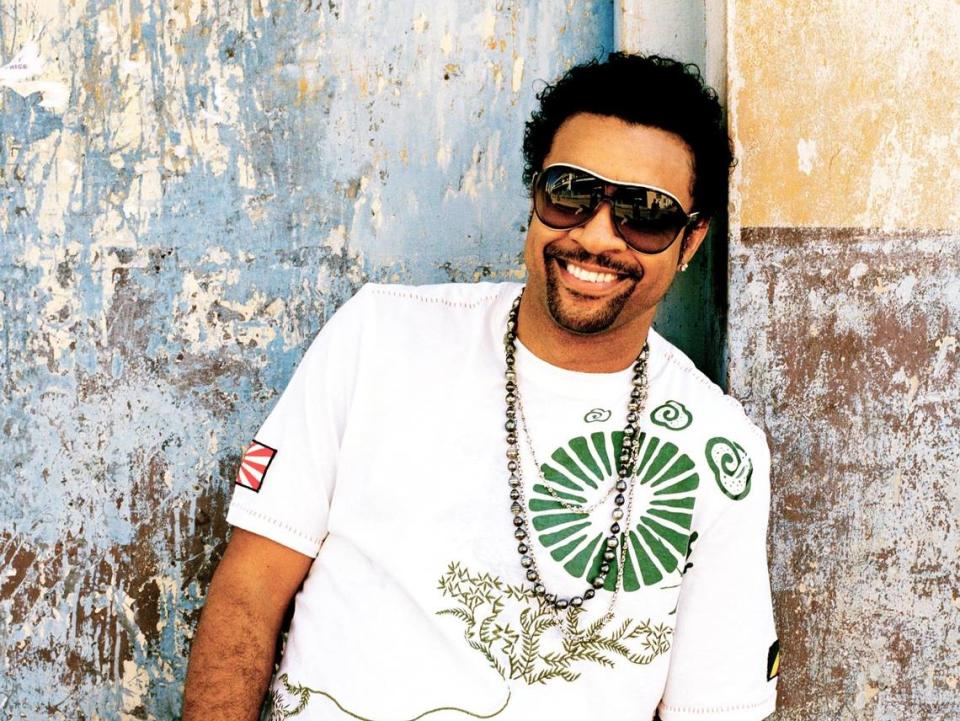‘Soca is life’: Celebrate 50 years of this Caribbean music at Miami Carnival
Go anywhere in the United States and odds are somebody, somewhere is doing a celebration for the 50th anniversary of hip-hop.
The art form that was born in the Bronx, however, is not the only Caribbean-influenced cultural phenomenon turning the big 5-0 in 2023.
This year’s 39th annual Miami Carnival, which takes place Columbus Day weekend, coincides with the 50th anniversary of another Trinidadian tradition: Soca. And as one of the biggest parties on the Caribbean circuit that begins in Trinidad and Tobago and “ends” in Miami, there’s a mission to also use the opportunity to educate people about the history of soca and Carnival.
There are those who think Carnival is just “people putting on a costume, running in the street and gyrating,” said Giselle “The Wassi One” Blanche, a well-known soca aficionado and South Florida personality. ”But it’s so much more than that.”

A band leader since the age of 14, Blanche has been a staple at Miami Carnival, which includes three days of events plus a Junior Carnival. Yet, even she sees a growing information gap because people don’t even know “why is it important to play soca at this time? What is the purpose of it? What is the origin?”
Ask Kees Dieffenthaller about Carnival’s purpose and his answer is rather unique.
“Carnival is rebellion,” said Dieffenthaller, known the world over as Kes, the lead singer of the legendary Kes the Band, “in the sweetest way.”
Kes is native to Trinidad and Tobago, which is considered the birthplace of the modern-day Carnival. The festivities draw revelers from around the world, and have become a year-round party, not just before Lent, the Catholic observation that historically kicks off Carnival. Somewhere along the line, some people believe the celebration’s rebellious spirit got lost. Lost in the revelry. Lost in the commercialization.
“In getting into soca, I got back to my roots, my history of it all,” Kes said. “To know what page I am in the story is very important to me but I do believe that we have lost the true root of” Carnival.
The origins date back to the late 18th century when enslaved West Africans in Trinidad were forbidden by their French masters from participating in their pre-Lenten masquerade balls.
Freed in 1834, the Africans combined their traditions with that of the colonists to create their own celebration that, in some cases, even mocked their oppressors. The festivities would produce calypso, otherwise known as the forefather of soca, and the steel pan, the national instrument of Trinidad and Tobago that is still part of the soundtrack of fetes.

“Steel pan brought me closer to my roots,” said Jeremy Phillip, a Margate native of Trinidadian descent who’s part of the Lauderhill Steel Ensemble. He said his father is one of the founding members of the Skiffle Bunch, one of the leading traditional steel bands. Phillip described his “purpose in life” as to “play steel pan and the love and joy of soca music worldwide.”
“The festivities are something that I use to get over my stress and bring peace in my life,” Phillip added.
That, in a sense, is the purpose of soca, the pulsating, uptempo music developed from calypso. Soca quite literally means so(ul) of ca(lypso). The origins of soca date back to 1973 and can be linked to one man: Lord Shorty. A calypso artist born in Trinidad, Lord Shorty decided to infuse the rhythms of East India with that of West Africa. That music became soca which, as opposed to the socially-conscious calypso was created to make the listener dance and feel good.
“Soca is life to me,” said Ashley Andrews, a Miamian of Trinidadian descent who has been playing mas at the Miami Carnival for six years and also serves as the social media manager for Miami Carnival. “Soca is, just like Carnival, joy, happiness and a little therapeutic.”
Soca has evolved over time, incorporating numerous genres from reggae and rock to Afrobeats and EDM. As Kes says, it’s “very difficult to put music in one box.”
“Music, to me, is like painting: you use different colors because you feel as an artist just as though you use different influences from different genres,” Kes said. He and his bandmates are credited with incorporating rock and Afrobeats into their unique brand of soca. “For me, I like the coolness of Afrobeats. I like the structure of rock and pop. I like the the meaning of R&B. I love the double-entendre of calypso. The aggressiveness of dancehall. All of these things are just ingredients.”
The common thread? Fun.
“What soca does have that a lot of music doesn’t have is a feel good element,” said multiplatinum Jamaican recording artist Shaggy. “It is a feel good genre. When people play soca, they feel good. It’s danceable. People are smiling. It brings joy.”
Despite Shaggy’s legendary status in the dancehall and reggae space, even the two-time Grammy winner has tried his hand at soca, collaborating with legends like Machel Montano and, most recently, Kes on a track entitled “Mood.” In fact, Shaggy actually grew up on soca and calypso.

“It’s all Caribbean music,” Shaggy said. “In my household in Jamaica, calypso was a big part of the soundtrack of my life. My grandmother was a big fan. She liked Arrow. She loved Sparrow. She liked Byron Lee and the Dragonaires. Just dealing with that made me have a love for that kind of art form.”
Shaggy, however, doesn’t see the genre as seasonal even though many soca artists drop music during Carnival season, which runs roughly from Dec. 26 through Ash Wednesday. Feeling good, as he described of soca, isn’t confined to a single season. That’s especially apparent given the amount of work that goes into a single carnival, from the band practices to the costume design.
“You actually see the whole movement happening,” Kes said. “These are everyday people, people who work in banks, work everyday 9 to 5 but they have another life and another purpose than Carnival. They also play steel pan. They also make mas. Being a part and around that – and in Trinidad it’s very much around. I think when it translates to outside it really gets lost.”
IF YOU GO
WHAT: Miami Carnival
WHEN: Miami Junior Carnival (Sept. 30), Panorama Steel Band Competition (Oct. 6), J’ouvert (Oct. 7) and Parade of Band and Concert (Oct. 8)
WHERE: 3700 NW 11th Place, Lauderhill, Fla. 33311 (Miami Junior Carnival, Panorama & J’ouvert) and 10901 SW 24th Street, Miami, Fla. 33165 (Parade of Band and Concert)
TICKETS: $20-$2500
For more information go to https://miamicarnival.org

